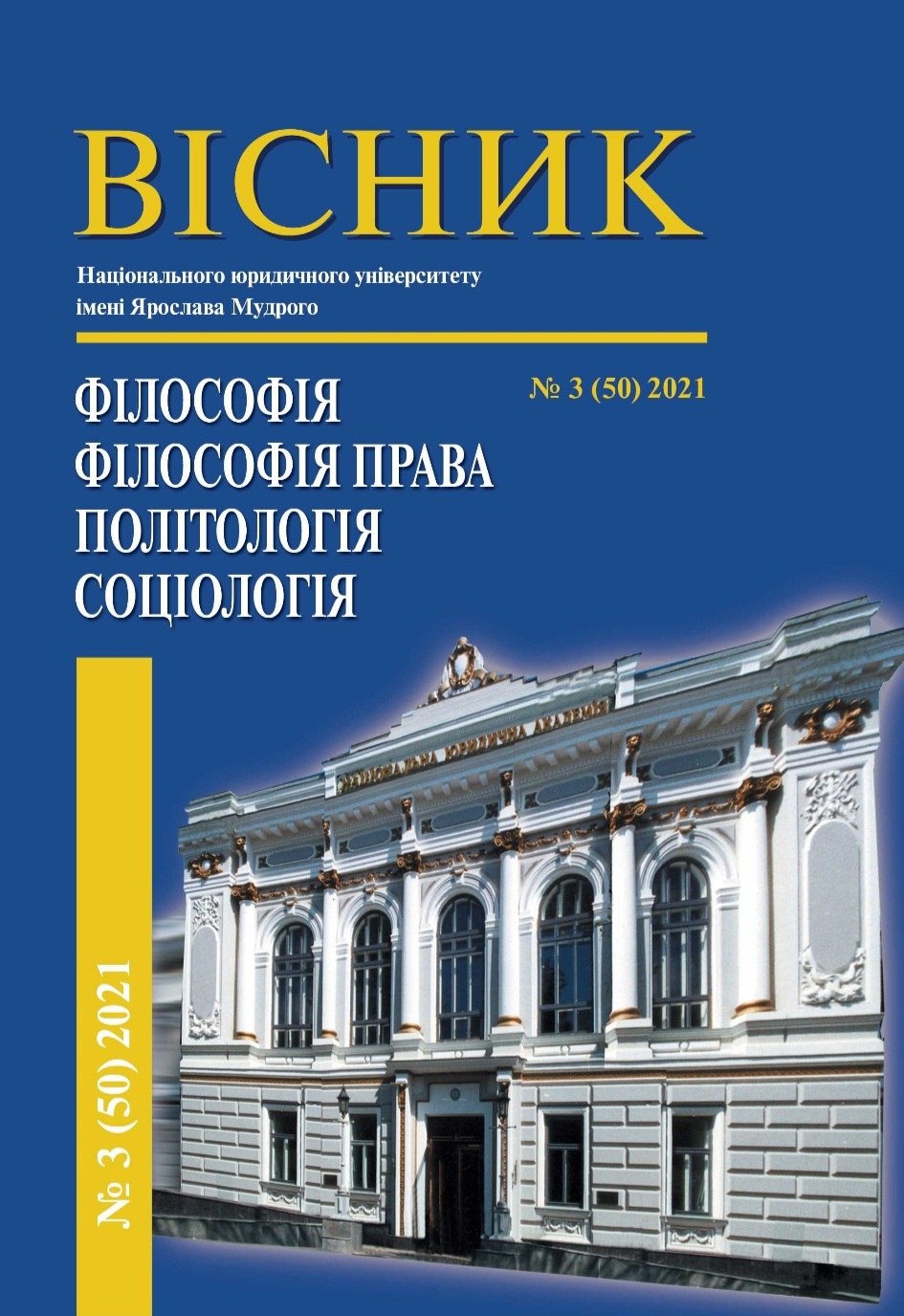ОСОБЛИВОСТІ ГРУПОВОЇ ІДЕНТИЧНОСТІ НАЦІОНАЛЬНИХ ТА РЕЛІГІЙНИХ МЕНШИН У ПЕРСОНАЛЬНОМУ БРЕНДИНГУ: НА ПРИКЛАДІ СУЧАСНОЇ СОЦІАЛЬНО-ПОЛІТИЧНОЇ СФЕРИ ІРАНУ
DOI:
https://doi.org/10.21564/2663-5704.60.299684Ключові слова:
політичний брендинг, особистий бренд, ідентичність бренду, атрибути особистого бренду, політика меншин, ІранАнотація
У статті осмислюється динаміка особистого брендингу в політичному ландшафті Ірану, зокрема вплив міноритетної ідентичності особистих брендів на їх сприйняття аудиторією. Для цього розглянуто наукові праці щодо іранської політики відносно релігійних та етнічних меншин, проаналізовано етнографічні матеріали з теми, та проведено опитування серед іранців в межах країни та за кордоном, щоб зрозуміти, як індивіди стратегічно комунікують приналежність до національних та релігійних меншин у своїх особистих брендах.
Посилання
Waller, T. (2020). Personal Brand Management. Cham: Springer International Publishing. DOI: https://doi.org/10.1007/978-3-030-43744-2.
Bailey, G. & Gayle, N. (2013). Politicizing, Depoliticizing, and the Creation of Advantage. In Ideology: Structuring Identities in Contemporary. Toronto: University of Toronto Press, ch.4, 69–88. DOI: https://doi.org/10.3138/9781442602076-005.
Palonen, K., Wiesner, C., Selk, V. et al. (2019). Rethinking Politicisation. Contemporary Political Theory, Vol. 18, 2, 248–281. DOI: https://doi.org/10.1057/s41296-019-00326-y.
Mirsajadi, A. R. (2020). Reading Hamlet in Tehran: Neoliberalism and the Politics of Politicizing. Theatre Journal, Vol. 72, 1, 39–60. DOI: https://doi.org/10.1353/tj.2020.0004.
Abid, A., Harrigan, P., Wang, S. et al.. (2023). Social media in politics: how to drive engagement and strengthen relationships. Journal of Marketing Management, Vol. 39, 3–4, 298–337. DOI: https://doi.org/10.1080/0267257x.2022.2117235.
Sohrabi, H. (2021). New Media, Contentious Politics, and Political Public Sphere in Iran. Critical Arts, Vol. 35, 1, 35–48. DOI: https://doi.org/10.1080/02560046.2021.1887311.
Ra’ees W., Kamal A. M. B. (2019). Human Rights of Religious and Ethnic Minorities in the Islamic Republic of Iran. The Journal for Interdisciplinary Middle Eastern Studies, Vol. 4, 9–31. DOI: https://doi.org/10.26351/jimes/4/1.
Hosseini, S.B. (Ed.). (2023). Ethnic Religious Minorities in Iran. Singapore: Springer Nature. DOI: https://doi.org/10.1007/978-981-19-1633-5.
Choksy, J.K. (2012). Non-Muslim Religious Minorities in Contemporary Iran. Iran and the Caucasus, Vol. 16, 3, 271–299. DOI: https://doi.org/10.1163/1573384x-20120017.
Elling, R. (2013). Minorities in Iran: Nationalism and Ethnicity after Khomeini. Ney York: Palgrave Macmillan.
Crane, K., Lal R., Martini J. (2008). Iran's Political, Demographic, and Economic Vulnerabilities. Santa Monica, CA: RAND Corporation, 2008. URL: https://www.rand.org/pubs/monographs/MG693.html.
Göle, N. (Ed.). (2022). Public Space Democracy: Performative, Visual and Normative Dimensions of Politics in a Global Age. Leiden; Boston: BRILL. DOI: https://doi.org/10.4324/9781003193753.
Hemmasi, F. (2020). Iranian Popular Music and History: Views from Tehrangeles. Tehrangeles Dreaming: Intimacy and Imagination in Southern California's Iranian Pop Music. New York: Duke University Press, ch. 2, 67–97.
Faggiano, M. P. (2023). Content Analysis in Social Research: Study Contexts, Avenues of Research, and Data Communication Strategies. Boston: BRILL.
Marvasti, A.B., Gubrium, J.F. (Eds.). (2023). Crafting Ethnographic Fieldwork. London; New York: Routledge. DOI: https://doi.org/10.4324/9781003275121.
Lavrakas, P.J., Traugott, M.W., Holbrook, A.L. et al. (2019). Experimental Methods in Survey Research: Techniques That Combine Random Sampling with Random Assignment. New Jersey: Wiley.
Soyini Madison, D. (2005). Methods: “Do I Really Need a Method?” A Method … or Deep Hanging-Out. Critical Ethnography: Method, Ethics, and Performance Critical ethnography: Method, ethics, and performance, ch. 2, 17–42. California: SAGE Publications. DOI: https://doi.org/10.4135/9781452233826.n2.
Ackerly, B., Bajpai, R. (2017). Comparative Political Thought. Methods in Analytical Political Theory. Adrian Blau (Ed.). New York: Cambridge University Press, ch. 13, 270–296. DOI: https://doi.org/10.1017/9781316162576.014.
For Love: Iran’s Outlaw Music Scene Refuses to Obey. The Media Line. URL: https://themedialine.org/top-stories/for-love-irans-outlaw-music-scene-refuses-to-obey/#:~:text=In%20Iran,%20there%20are%20two,to%20the%20underground%20music%20world.
Rashid, A. (2023). The politics of veiling and unveiling. Feminist Media Studies, Vol. 23, 2, 723–728. DOI: https://doi.org/10.1080/14680777.2023.2186253.
Beleaguered Yet Defiant, Iranian Artists Persecuted for Supporting Anti-State Protests. Center for Human Rights in Iran. URL: https://iranhumanrights.org/2022/11/beleaguered-yet-defiant-iranian-artists-persecuted-for-supporting-anti-state-protests/.
Von Hein, S. (2020). Restrictive measures nothing new for Iran's female singers. DW. URL: https://www.dw.com/en/coronavirus-irans-female-singers-familiar-with-restrictive-measures/a-53272796.
Kazemzadeh, F. (2000). The Baha'is in Iran: Twenty Years of Repression. Social Research, Vol. 67, 2, 537–558.
Hashemi, M. (2020). Coming of Age in Iran. New York: New York University Press. DOI: https://doi.org/10.18574/nyu/9781479876334.001.0001.



